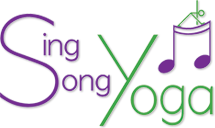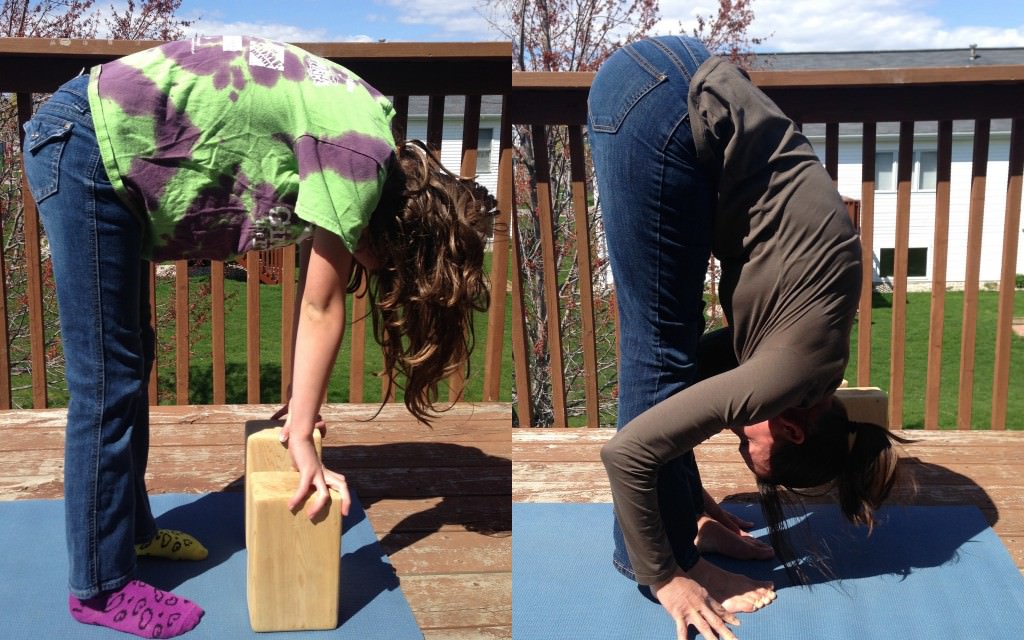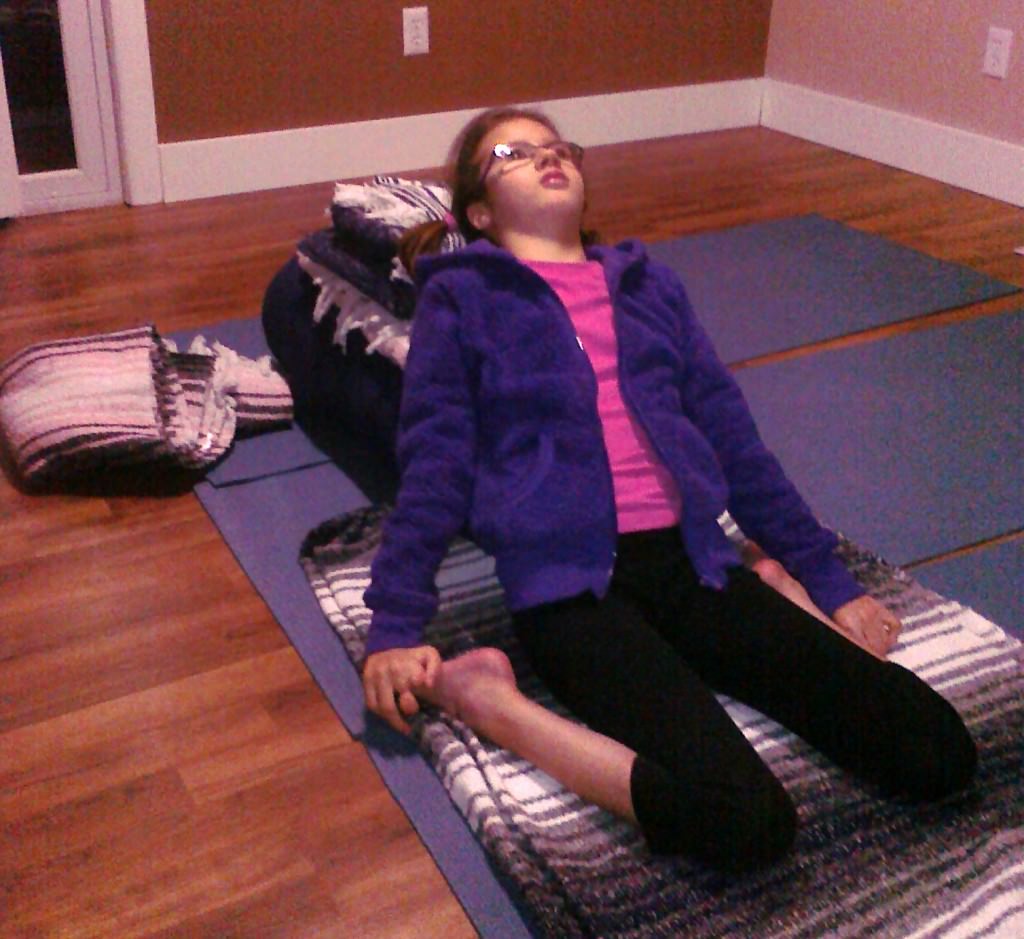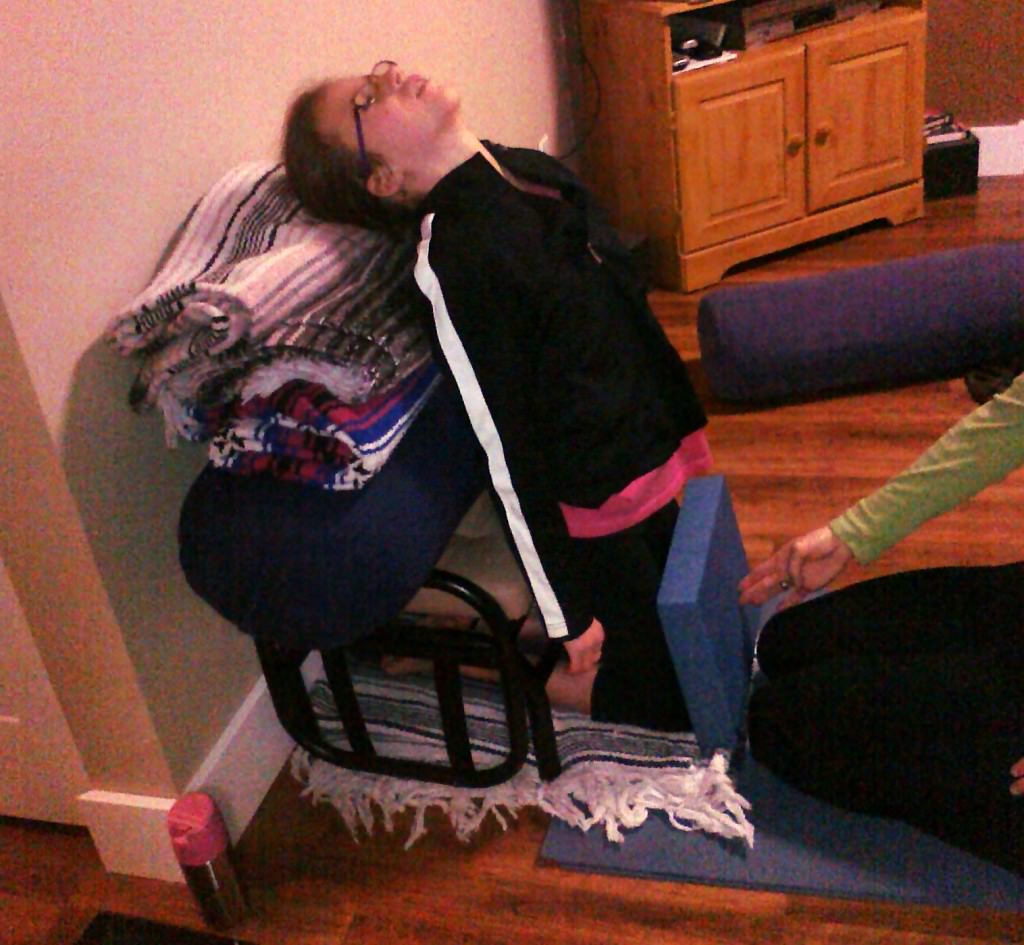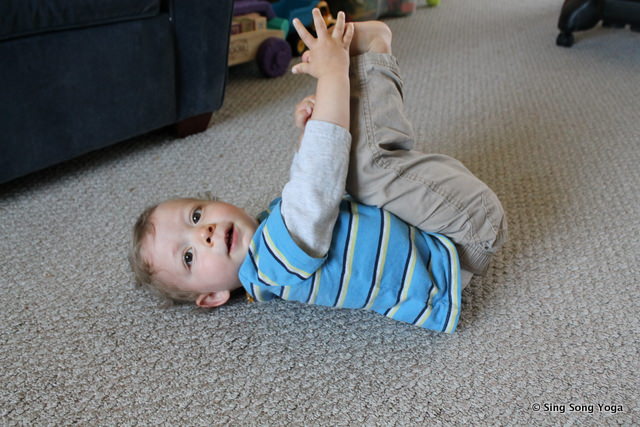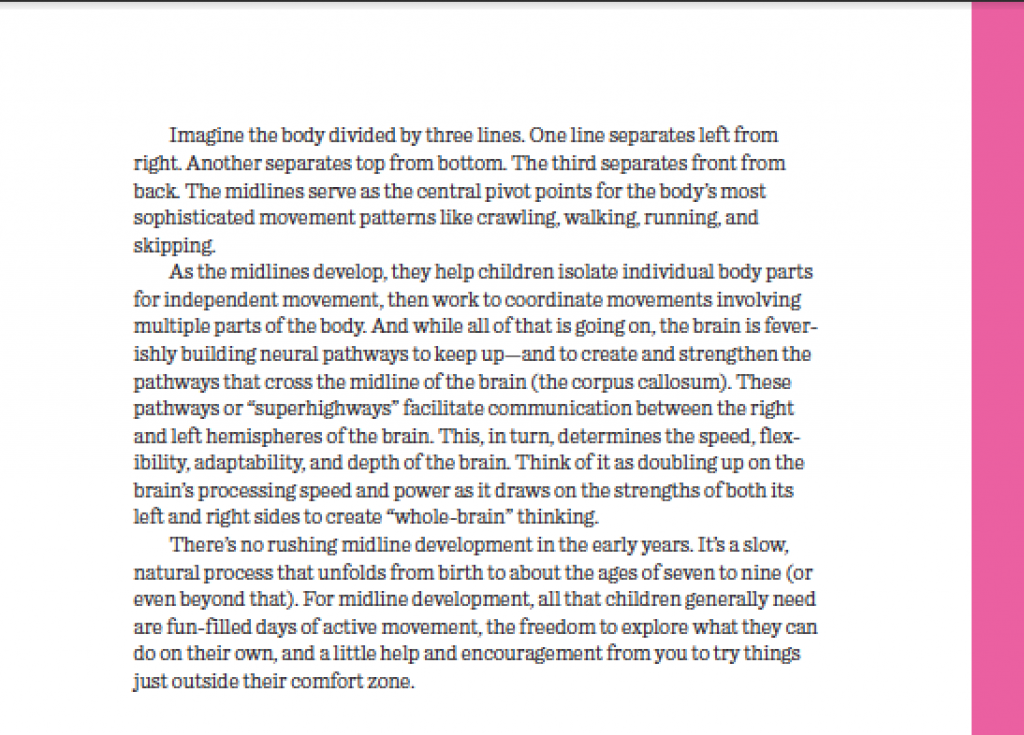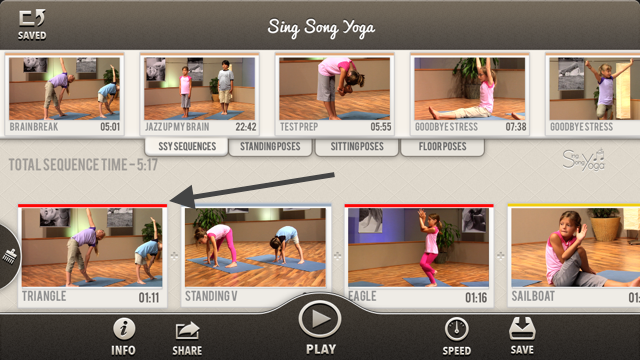Posts Tagged ‘yoga in the classroom’
8 Kids Yoga Myths
A dictionary meaning of the word myth is — “a widely held but false belief or idea.” Ultimately ideas are yoga myths or not, only in the eye of the beholder. But I’d like to challenge some common misunderstandings about kids yoga.

Adho Mukha Svanasana (tunnel of downward dogs)
Here are eight ideas that I typically hear from parents that I would consider yoga myths in the world of kids yoga:
1. My kid is not flexible enough to do yoga.
I hear from parents, about their children, and from adult students that they’re not flexible enough for yoga. This one is the misunderstanding that I run into the most often. Yes, over time many experience increased flexibility from doing yoga, but it’s not a prerequisite.
Doing yoga poses has many benefits within the process, one of which is gaining increased flexibility. But as an example. let’s compare two yogis doing a forward bend (Uttanasana).
“Yogi A” uses blocks under her hands because she doesn’t touch the floor. And “Yogi B” folds forward more completely, turning her ribcage upside down with the crown of her head comfortably pointing toward the floor without strain.
Each of these yogis experience similar benefits from the pose. It’s not as much about how far the yogi bends, it’s more about the alignment in the pose and the relative range of movement. For example, focusing on just one aspect of the pose, each yogi is stretching their hamstrings. The relative movement achieved with their personal full extension of their muscles provides the benefit – not the ultimate length that’s achieved. It’s likely that the beautiful photos of yogis bending in seemingly impossible ways contribute to this misunderstanding, however, just know that yoga works for all flexibility levels. That’s one of the benefits that fits everyone.
Furthermore, the less flexible folks can actually be less prone to certain injuries because their bodies give them some natural limits that the more flexible yogis might need to discover on their own. There’s no need to be flexible to do yoga!
2. My child is too hyperactive to do yoga
One common benefit of yoga is that many experience a calming effect. Due to this fact, some feel that their children are too hyperactive to do yoga. However, a child might find that the opposite is true. The calming effect on the nervous
system that yoga can provide might be a good reason for some children to find yoga. Again it’s a relativity thing. Similar to the range of muscle movement (in number one) being the important factor providing benefit, it’s the relative range of the calming effect that provides the benefit. For example, a child who begins in a perceived hyperactive state and ends in a more typical active state might be achieving that same benefit as a typically active child ending a yoga session in a more perceived calm state. It’s the relative change that is the important factor, not the overall perception of where others want that child to be (or behave). The nervous system holds the imprint of the change even if those outside the child’s body can’t see it as clearly through behavior.
3. My child can’t focus enough to do yoga.
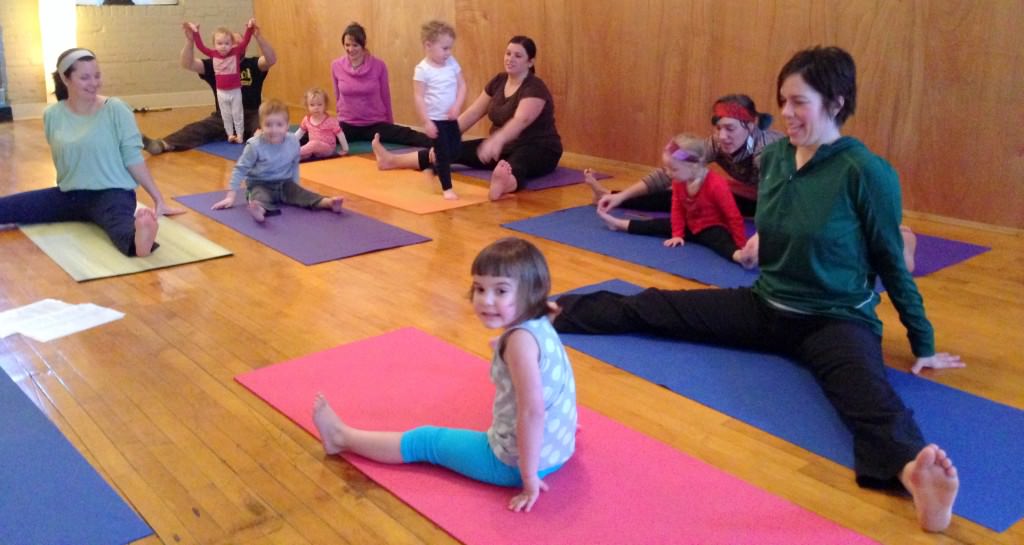
Upavistha Konasana (seated wide leg pose)
We have a bit of a relativity theme going here, but it applies to focus as well. Some children can sit and build puzzles for a seemingly endless span of time and some can barely sit long enough to open the box to begin. The idea of “I am where I am” applies here. There’s no good or bad, there’s only the perception of such. And though it is true that yoga can eventually result in an improved ability to focus, it too is not a prerequisite. Some young yogis do a Downward Dog (Adho Mukha Svanasana) for 3 seconds and then need to get up and run around their mat before they are ready for another. This child still gains benefit from the 3 seconds in dog even if it might not look the same as the child who can remain in Dog for 30 seconds. Growth is measured by looking at a particular skill in the beginning and comparing it to the skill after a period of time. So if this young yogi moves from doing Downward Dog for 3 seconds at the beginning of a 10-week session up to 8 seconds at the end of this time, then growth in the pose and benefit for the child has been achieved.
If you come across a yoga teacher who expects your child to do things the same as all other students in your class, it might be helpful to find a new teacher. Yoga should remain outside the tradition of trying to get children to conform to the same robot-like conformity that is still expected in some settings. Yoga is personal. Its benefits are illustrated in personal ways. Avoid comparing your child to others and enjoy comparing your child today to your child a year ago. Growth has occurred – whether it fits the norm or not (inside or outside of yoga).
4. My child cannot do yoga because of physical limits.
Whether your child is a fully able-bodied child or a child with some limits, the benefits of yoga can be experienced by most. One of my beloved young yogis who is limited physically was limitless in her determination to experience the joys and benefits of yoga as she achieved each. We together found one or more aspects of each pose that would be perfect for her to work on in that particular session. For example, when working on the sitting forward bend (Paschimottanasana), one session we focused our attention on lengthening her calves, in the opposite direction of her high tone, extending through her inner heels and pulling her toes toward her shins. In another session we would focus on pressing her thighs into the floor. In yet another session we would work on lengthening from her hips up through her chest taking her shoulders away from her ears. This is similar to focus changes in fully able-bodied adults from session to session, but we broke it down in a child-friendly way for her to experience results.
5. My kid is an athlete and would not like yoga
Though yoga is growing in popularity in the States, there can sometimes still be a perception that athletes are not the “yoga type.” Again, the opposite can be true. Athletes in many different sports have enjoyed the multitude of benefits from yoga due to the simple fact that yoga can provide a positive soothing balance for the sometimes overused muscles and emotional energy that the stream-lined goal focus within each sport can invoke. In addition, the breadth of focus in yoga, meaning the broad range of positive effects on the body, might assist the athlete in preventing injury.
6. Some kids are just not the “yoga type.”
Again, there still exists this idea that a person is either the “yoga type” or not but it’s simply not true. Virtually everyone can benefit from some time to deliberately chill while focusing on ones’ body in space. Each child or adult experiences yoga in his or her own personal way. There’s no “type” of person more likely to find benefit. The only aspect necessary is the willingness to give it a shot. And the only necessity to continue is the desire to do so.
7. Yoga is not for boys or men.
This is slowly changing but still remains an underlying belief for many. Yoga classes typically have more women than men, but as men continue to discover the benefits of yoga and these next generations begin yoga as kids, this will eventually fade out. As with most biases, children learn these from adults. Boys, themselves, come into this world as natural yogis. But a myriad of societal influences can eventually persuade boys that there are some things that boys just do not do. This yoga myth will eventually fade and your family can be a part of this change. Boys can benefit greatly from yoga as mentioned in the characteristics outlined in the other myths in this post.
8. As a parent, I should know yoga before introducing my child to it.
As outlined in 6 Tips to Dive Right into Kids Yoga, there is simply no experience necessary to begin yoga – as an adult or as a child. Every single person is a beginner when starting something new. Your yoga instructor (a live person or through a book) will guide you through beginning yoga. So just dive right in!
Related Posts:
Crossing the Midline and Kids’ Yoga Kids’ yoga is one of the many activites that can provide cross-lateral experiences for children. If done regularly might assist in building the brain for…
Top 6 Yoga Poses for Toddlers “A few months ago a parent asked how she could best do yoga with her one-year-old daughter…”
Kids’ Yoga App – Create Your Own Balancing Sequence Effortlessly create a balancing sequence with a few taps of this kids’ yoga iOS app.
Yoga in Schools: Kids and Teachers Talk Kids’ Yoga A quick peek into what kids and teachers are saying about using the Sing Song Yoga app in the classroom.
Top 5 Tips to Help Balance in Kids’ Yoga: Kid Twitter Question Answered A kid question answered: “Do you have any tips to help us balance better?”
Getting Kids Ready to Write: Yoga in Schools A teacher question answered: “I was wondering the best combinations [of poses] to use [with my students] for getting ready to write.”
Twitter Leads to Most Rewarding Visit Imaginable Sing Song Yoga founder does yoga with students she connected with on Twitter.
For more info: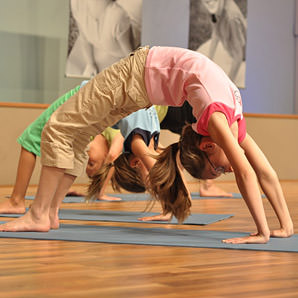
Sing Song Yoga® Kids’ Yoga App
Sing Song Yoga® kids’ yoga DVD
Sing Song Yoga® school program
This entry was posted on Thursday, April 30th, 2015.
Posted in Benefits of Yoga, Education, Kids Yoga at Home, Parenting, Sing Song Yoga, Yoga in Schools.
Tagged: children, childrens yoga, ipad app, kids yoga, kids yoga benefits, myths of kids yoga, myths of yoga, parenting, schools, sing song yoga, yoga in schools, yoga in the classroom
6 Reasons I Want My Kids to Learn Through the Arts in Schools
Schools are changing, by necessity and through driven educators, but is happening s – l – o – o – o – w – l – y! I’m really itching to see changes occur at a much faster pace at this point in my life! My own children are at an age where I’m incessantly looking for something significantly different. I continuously explore the variety of alternatives available. This post will discuss learning through The Arts in schools — not as a side activity, but actually using the arts as the method to teach. Teaching math, reading, writing, science, social studies, etc. through music, movement, drawing, theater, poetry, etc.
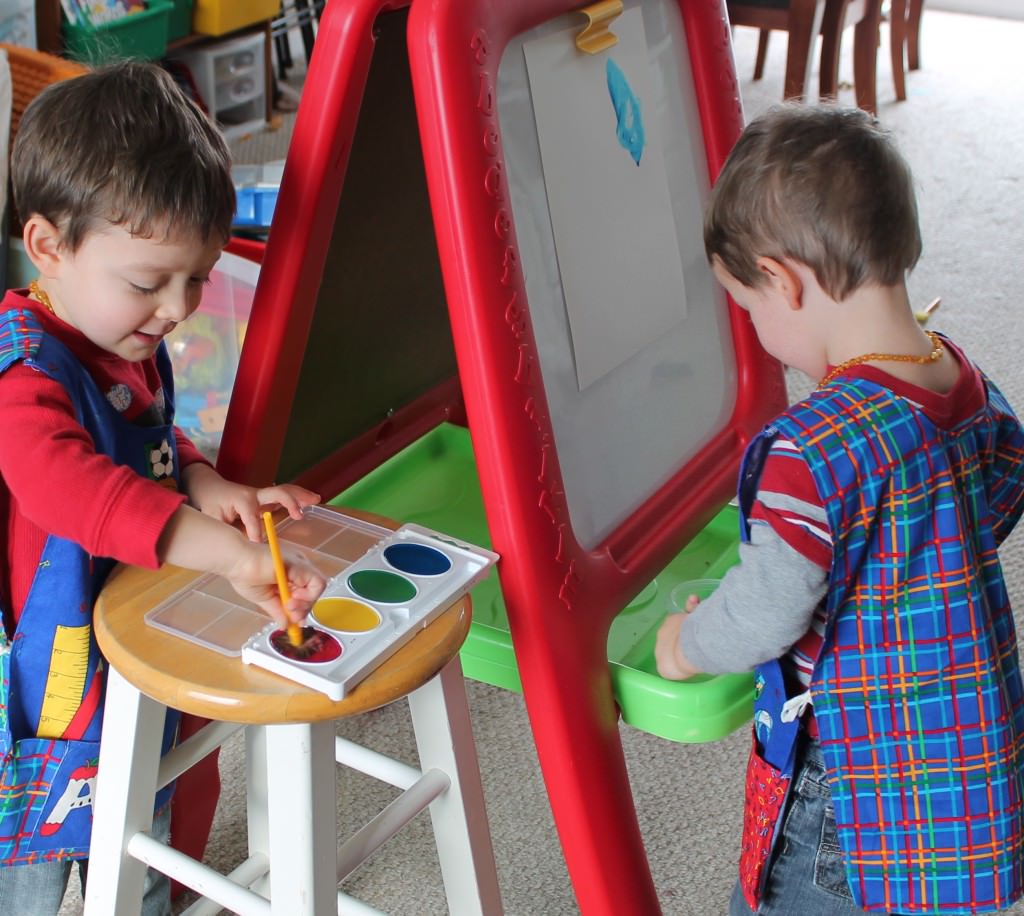
Learning the arts through a specialist is critical to learn each “art” in greater depth. At the same time learning our content through the arts allows us to deepen our learning of all subjects!
Will teaching through the arts fix everything that is missing in education? It’s not likely. But it can vastly improve the experience and results for kids and our communities. According to Linda Crawford in her book Lively Learning: Using the arts to teach the K-8 Curriculum, there are 6 powerful reasons for integrating the arts into the daily curriculum and I will explore each of these below.
1. The arts make the content more accessible
The idea of teaching the school curriculum through the arts to make content more accessible seems to be the most obvious reason for making it a part of our classroom. The arts are able to reach all different types of learners simply because the arts in and of themselves have stemmed from our human desires over the centuries. We weren’t told we had to dance or draw, we were simply given the materials to explore them naturally. We weren’t forced to tell stories or listen to others tell stories, we were just naturally drawn to doing so. In using the arts, drawing might provide students with a jumpstart to writing or math. Students who learn most powerfully through their bodies, kinesthetic learners, might first act out a fairy tale or a story problem to better access a deeper understanding of each. When a teacher provides the opportunity to use the arts within the content area it not only reaches more students’ learning styles but it also enhances the depth of learning for each individual student. It provides them the opportunity to explore through a wider range of experiences. This not only engages more of the brain for easier learning, but it allows students to discover naturally their own strengths and most powerful interests, thus leading to more powerful learning and growth.
2. The arts encourage joyful, active learning
If I were to ask you to remember some of your most joyful learning in elementary school, you’re likely able to easily remember some. When our learning is connected with joyful authentic purposes, it literally changes the chemistry of the brain and has the potential to open up the gateway to our long-term memory. Emotions are powerfully connected to our learning. Learning in a drab, emotionally-devoid environment takes so much more work and energy as compared to learning in a joyful way. It would seem obvious to most that integrating the capacity of the arts, including the positive emotions often elicited through them, provides greater opportunity for learning and growth.
3. The arts help students make and express personal connections to content
When I meet someone and learn their name I do my best to remember it – at least for the time period that I’ll be spending with them. I have found over time that if I make a connection (relate it to something I know) right away I’m more likely to remember. If her name is Mary, I connect it to my sister, etc. If it’s a name I’ve never heard of, I connect the parts of the name to something familiar. Last week I met a guy named Artiaysa (ART-I-ESSA). It took me a moment, but I made three connections to remember it. “Art”, of course. “Eye” in the middle and my niece Tessa for the end. Making connections from the know to the unknown is necessary for learning.
If I was in the classroom and learning new vocabulary, I could draw a simple sketch of the parts of the words. Students could also use poetry, songs, theater/videography to make and express these personal connections to these new words and to their understandings of each. If I can connect it to my life, I can remember it. Additionally if it interests me, it adds extra potential for greater depth of understanding. The arts can add to the interest level of subject matter simply by providing additional avenues for expression of the new concepts. If I have the chance to write a song about photosynthesis, for example, it instantly ups my interest level.
4. The arts help children understand and express abstract concepts
Abstract ideas are those that need to be visualized or imagined as they cannot be illustrated through concrete examples. Learning letters and their sounds is an abstract concept for children. But teaching the alphabet through the arts naturally allows for a deeper level of understanding and use/expression of the letters… aka reading.
One example of using the arts to learn the alphabet is using music, movement and sounds along with the visible letter to transform the abstract shape of the letters to a more concrete understanding. As students repeatedly connect the abstract letters to the concrete experiences they gradually move toward reading… turning those abstract letters and sounds into words and sentences with real meaning.
5. The arts stimulate higher-level thinking
According to Linda Crawford, in the above mentioned book, there are three kinds of thinking we want to encourage in our kids: attending, discerning, and inventing. She says that attending and discerning are more analytical skills, but inventing takes students a step further to building upon what they’ve learned to make new meaning. This, she says, required imaginative understanding.
The arts are a natural way to encourage all three types of learning within our classroom. They can help children move from a more-in-depth understanding of the world as it is, as well as encourage children to imagine the possibilities of what it can be.
6. The arts build community and help children develop collaborative work skills
The benefits of integrating the arts into the content areas is multiplied when students work together to create and learn. When we work in a creative manner and throughly enjoy the process and the final product, the depth of learning and experience is enhanced dramatically. In my kindergarten classroom one simple collaborative creative activity is making up movements to our songs. The movement, music, fun, and collaboration combined work beautifully together to help the children not only remember the song lyrics more easily, but also provides a deeper understanding of the subject matter being shared within the song lyrics.
Learning the arts through a specialist is critical to learn each “art” in greater depth. 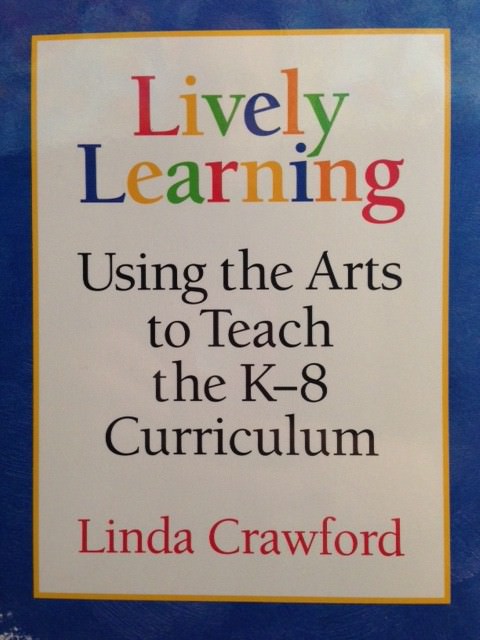 At the same time learning our content through the arts allows us to deepen our learning of all subjects! Our children greatly benefit from both! So let’s work together as educators to begin giving the arts a try within our curriculum in addition to the critical learning that occurs through the specific arts classes with a specialist. Thank you to Linda Crawford for sharing the basis for this post in her book Lively Learning: Using the Arts to Teach the K-8 Curriculum. And if you’re interested in giving it a shot, this book is a nice resource.
At the same time learning our content through the arts allows us to deepen our learning of all subjects! Our children greatly benefit from both! So let’s work together as educators to begin giving the arts a try within our curriculum in addition to the critical learning that occurs through the specific arts classes with a specialist. Thank you to Linda Crawford for sharing the basis for this post in her book Lively Learning: Using the Arts to Teach the K-8 Curriculum. And if you’re interested in giving it a shot, this book is a nice resource.
Related Posts:
Crossing the Midline and Kids Yoga Kids’ yoga is one of the many activites that can provide cross-lateral experiences for children. If done regularly might assist in building the brain for…
Top 6 Yoga Poses for Toddlers “A few months ago a parent asked how she could best do yoga with her one-year-old daughter…”
Kids Yoga App – Create Your Own Balancing Sequence Effortlessly create a balancing sequence with a few taps of this kids yoga iOS app.
Top 5 Tips to Help Kids Yoga Balance: Kid Twitter Question Answered A kid question answered: “Do you have any tips to help us balance better?”
Getting Kids Ready to Write: Yoga in Schools A teacher question answered: “I was wondering the best combinations [of poses] to use [with my students] for getting ready to write.”
Twitter Leads to Most Rewarding Visit Imaginable Sing Song Yoga founder does yoga with students she connected with on Twitter.
For more info:
Sing Song Yoga® Kids’ Yoga App
Sing Song Yoga® kids’ yoga DVD
Sing Song Yoga® school program
This entry was posted on Friday, April 17th, 2015.
Posted in Education, Parenting, Yoga in Schools.
Tagged: kids yoga, learning through the arts, music and movement, sing song yoga, teaching through music and movement, the arts, the arts in school, the arts in schools, the arts in the classroom, yoga for kids, yoga in schools, yoga in the classroom
Crossing the Midline and Kids Yoga
Do you ever wonder why small children seem to lack coordination and tend to perform tasks slowly and somewhat clumsily? This is due to the fact that they are in the process of building neural networks – “roads” – in the brain.
You have likely heard of the terms cross-lateral movements or crossing the midline. The midlines are invisible lines dividing the body in half. When a leg or an arm from one half of the body crosses over to the other half of the body this is crossing the midline. This helps the brain communicate in greater depth by connecting both halves of the brain via the network of fibers, called the corpus callosum. This integration of the two sides of the brain determines the speed, flexibility, adaptability and depth of the brain’s thinking. When children are allowed to play freely over the years of childhood, they naturally cross these midlines just by being kids and playing in limitless ways.
Sometimes, however, children will show up to school without having had many of the necessary experiences for this to have occurred with the necessary repetition. When the midlines aren’t fully developed, cross-lateral movements might feel unnatural to a child. Educational researchers, educators, occupational and physical therapists have come up with activities to attempt to make up for lost time, so to speak. By getting children to move in specific ways within deliberate activities it can make midline crossing a regular occurrence to help achieve the repetition necessary to help build these roads in the brain. The handout below says “Think of it as doubling up on the brain’s processing speed and power as it draws on the strengths of both the left and right sides to create ‘whole-brain’ thinking.” Authors of A Moving Child is a Learning Child say that crossing the midline not only streamlines movement, it supersizes those superhighways across the corpus callosum. As such it plays a critical role in preparing children’s brains for formal learning.
Kids’ yoga is one of the many activites that can provide cross-lateral experiences for children. And if done regularly, along with other rhythm and movement activities, it might assist in building the brain for optimal development.
The handout below explains midlines in a new way for me. Prior to this learning I only divided the body in two halves, the left and right. But this author divides the body in two additional directions: the top and bottom and the front and back, thus making it midlines – plural. This opens the doorway to many more physical movements meeting the requirements of cross-lateral movements and is worth exploring further. I always love learning new things!
For some occupational therapy activities for crossing the midline see OT Mom Learning Activities.
Thank you to Free Spirit Publishing and authors of A Moving Child is a Learning Child, Gill Connell and Cheryl McCarthy, for allowing me to share this handout through Learners’ Edge.

Related Posts:
Top 6 Yoga Poses for Toddlers “A few months ago a parent asked how she could best do yoga with her one-year-old daughter…”
Kids Yoga App – Create Your Own Balancing Sequence Effortlessly create a balancing sequence with a few taps of this kids yoga iOS app.
Top 5 Tips to Help Kids Yoga Balance: Kid Twitter Question Answered A kid question answered: “Do you have any tips to help us balance better?”
Getting Kids Ready to Write: Yoga in Schools A teacher question answered: “I was wondering the best combinations [of poses] to use [with my students] for getting ready to write.”
Twitter Leads to Most Rewarding Visit Imaginable Sing Song Yoga founder does yoga with students she connected with on Twitter.
For more info:
Sing Song Yoga® Kids’ Yoga App
Sing Song Yoga® kids’ yoga DVD
Sing Song Yoga® school program
This entry was posted on Monday, March 30th, 2015.
Posted in Benefits of Yoga, Education, Parenting, Yoga in Schools.
Tagged: children, cross-lateral activities, cross-lateral moments, crossing the midline, crossing the midlines, early childhood, early childhood activities, kid yoga, kids yoga, kids yoga benefits, midlines development, physical activities for toddlers, sing song yoga, yoga for kids, yoga in schools, yoga in the classroom
Yoga in Schools: Kids and Teachers Talk Kids Yoga.
A quick peek into what kids and teachers are saying about using the Sing Song Yoga app in the classroom. Kids yoga in schools explored… Highlights from the video clip:
Tell us about Sing Song Yoga®
What I would tell other kids about Sing Song Yoga is that you have to try it because it calms you before, if you do Daily Five in your classroom or writing. ~ first grader, MI
It all started with a simple challenge from our movement specialist in the district to say we’ve got to get our kids moving and that will increase the engagement. And I would say that Sing Song Yoga is our perfect answer to doing that. ~ Kristi Zoerhof, First Grade Teacher, MI
- “It keeps you strong and healthy and it really keeps you calm when you’re doing stuff.”
- “I would tell other kids that Sing Song Yoga is really fun.”
- “It is the funnest thing in the world.”
- “It gets your body moving and it makes you exercise.”
- “The app is my favorite because it is completely customizable. Whatever you have time to work with, whether its 5 minutes or 20, you can create yoga sequence videos for your kids to do. And it is actually a spot in our lesson plans that we have a spot for yoga.”
- “It’s really really fun and it’s relaxing.”
- “They love it. They look forward to it. They request it. And it is probably our most popular activity of the day.”
- “They should do it ’cause it’s really really fun.”
How does Sing Song Yoga® make you feel?
- “Sing Song Yoga makes me feel happy and calm.”
- “We find that we are more focused and our work time is more productive.”
- “I feel happy from yoga.”
- “Sing Song makes me feel happy.”
- “Sing Song Yoga makes me feel calm.”
- “It’s calming.”
- “I like crane pose because it makes me feel steady.”
- “Sing Song Yoga makes me feel happy.”
- “Sing Song Yoga makes me get happy and excited.”
What would you tell other teachers about Sing Song Yoga®?
- “I’m really sure that if your children do it, it’s going to be fantastic.”
- “Truly, every minute spent in Sing Song Yoga we have seen the rewards and the benefits in our classroom work. I would recommend it to every classroom teacher who wants to give their students a moment to have intentional movement breaks.”
- “The songs are really cool.”
- “You can see it on the iPad and you can see it on the screen.”
- “Try Sing Song Yoga. You will not be disappointed.”
- “I love Sing Song Yoga.”
Related Posts:
Getting Kids Ready to Write: Yoga in Schools A teacher question answered: “I was wondering the best combinations [of poses] to use [with my students] for getting ready to write.”
Twitter Leads to Most Rewarding Visit Imaginable Sing Song Yoga founder does yoga with students she connected with on Twitter.
Top 5 Tips to Help Kids Yoga Balance: Kid Twitter Question Answered A kid question answered: “Do you have any tips to help us balance better?”
At Sing Song Yoga we love tweeting with students about their yoga ideas, experiences and questions. We also love chatting with teachers! 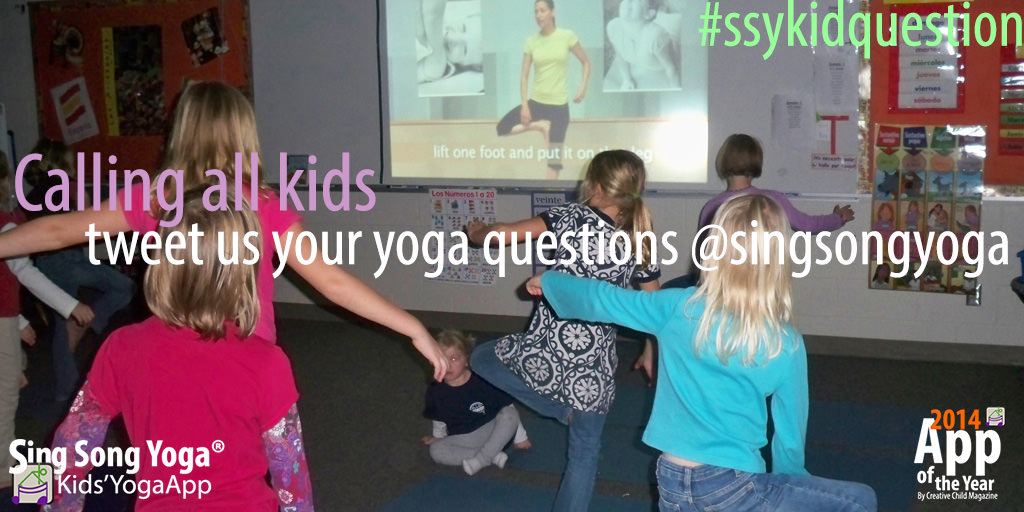
For more info:
Sing Song Yoga® Kids’ Yoga App
Sing Song Yoga® kids’ yoga DVD
Sing Song Yoga® school program
This entry was posted on Monday, February 9th, 2015.
Posted in Benefits of Yoga, Education, Sing Song Yoga, Yoga in Schools.
Tagged: app, brain breaks, children, childrens yoga, dvd, education, educators, kids yoga, kids yoga app, movement acivities, movement in the classroom, schools, sing song yoga, testimonial, yoga for children, yoga for kids, yoga in schools, yoga in the classroom
Kids Yoga in Schools: Getting First Graders Ready to Write
Sue, a first grade teacher from Michigan writes:
I was wondering the best combinations [of poses] to use [with my students] for getting ready to write.”
This is a great question! Yoga in schools can be a powerful resource for helping kids get ready to write, as well as do other school tasks. Kids’ Yoga is not going to take overly energetic children and mesmerize them into a state of conformity, but it can help a child transform their energy into a more usable form for accomplishing particular tasks. As teachers we occasionally need tiny reminders that children are not built to sit for long periods, and their squirminess might be good feedback to us that their bodies truly need to move in order for their brains to work most efficiently.
I know that, as an adult, when I rush around my world to run errands and then sit down in front of my computer to get some work done, it takes me a bit of time to refocus on my task at hand. Also, if I sit for an extended period of time I need to get up and move to focus most efficiently. Similarly, if a child is moving from one activity to the next without time to refocus with some deliberate guidance, or is sitting for extending periods of time without a chance for specific movement, then it’s likely that s/he won’t be able to give her best.
Yoga in schools can provide purposeful tools for helping children refocus. There’s much involved in how yoga can do this. However, simply put, focusing on one’s body to get into and hold a pose can help quiet the mind’s chatter, allowing more space for purposefully focused thought. And if the yoga movement itself is sufficiently involved it can fulfill the body’s need to move in order to stimulate the necessary systems for optimal learning.
In other words the physical yoga poses and the focus necessary to accomplish them work in tandem to help children refocus.
In addition to this, particular sequencing of poses also has the potential to calm the nervous system, which counters the stressors that physically shut down the brain for learning. The brain of a child who is in distress physically shuts down the networking necessary for learning. The brain of a relaxed child has much greater learning potential.
When thinking about yoga in schools it might be helpful to know that poses can be divided into three categories regarding their main effects on the nervous system:
- energizing poses (red – see arrow in pic below)
- calming poses (blue)
- neutral poses (yellow)
Poses can be sequenced to deliberately shoot for particular goals. For example, our Brain Break sequence was created to assist students in refocusing within their school day with the least number of poses necessary to accomplish the goal.
Brain Break Sequence includes:
- Triangle – general movement lengthening and strengthening the entire body
- Standing V – the inversion allows blood flow to the brain which may enhance mental functioning and forward bends calm the nervous system
- Eagle – crosses the mid-line helping the two halves of the brain communicate through the corpus callosum (helping to coordinate skills being carried out in different parts of the brain). Eagle also stimulates the vestibular system (balance), stimulating the brain for new learning
- Sailboat – crosses the mid-line and twisting allows for additional release of tension
Note below: the color coding above each pose in the app screenshot: red, blue and yellow represent energizing, calming and neutral poses respectively.
The Jazz up My Brain sequence within the Sing Song Yoga App is a longer version at 22 minutes. Teachers can throw poses out or add poses within the app within the sequence canvas and make it work for each situation. Sequences you create can be saved and named. And here’s another example of the app in use.
Thanks for stopping by! We intend to continue growing our posts dedicated to helping teachers enjoy the benefits of yoga in the classroom!
Until next time, Happy Teaching!
We would LOVE to hear from you – how you’re using yoga in schools or questions of how to begin. We are on Twitter @singsongyoga and Facebook and really look forward to connecting!
For more info:
Sing Song Yoga® kids’ yoga DVD
Sing Song Yoga® Kids’ Yoga App
Sing Song Yoga® school program
This entry was posted on Saturday, January 24th, 2015.
Posted in Benefits of Yoga, Education, Kid's Yoga Sequences, Sing Song Yoga, Yoga in Schools.
Tagged: app, children, childrens yoga, first graders, health, ipad app, iphone app, ipod touch app, kids, kids yoga, kids yoga app, kids yoga benefits, mindfulness, physical activities for toddlers, research, schools, sing song yoga, test prep, writing, yoga for kids, yoga in schools, yoga in the classroom, yoga poses
